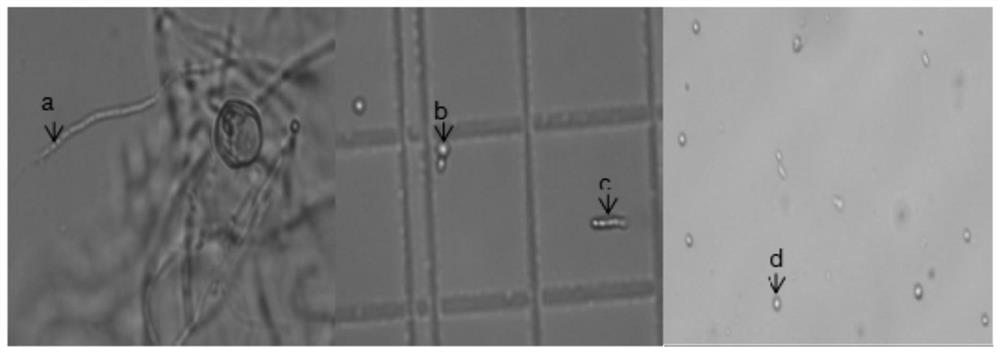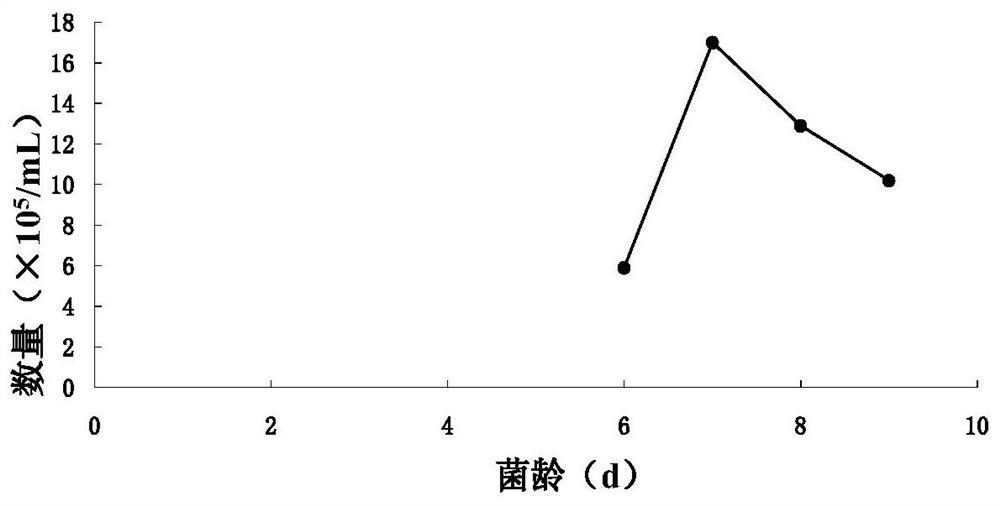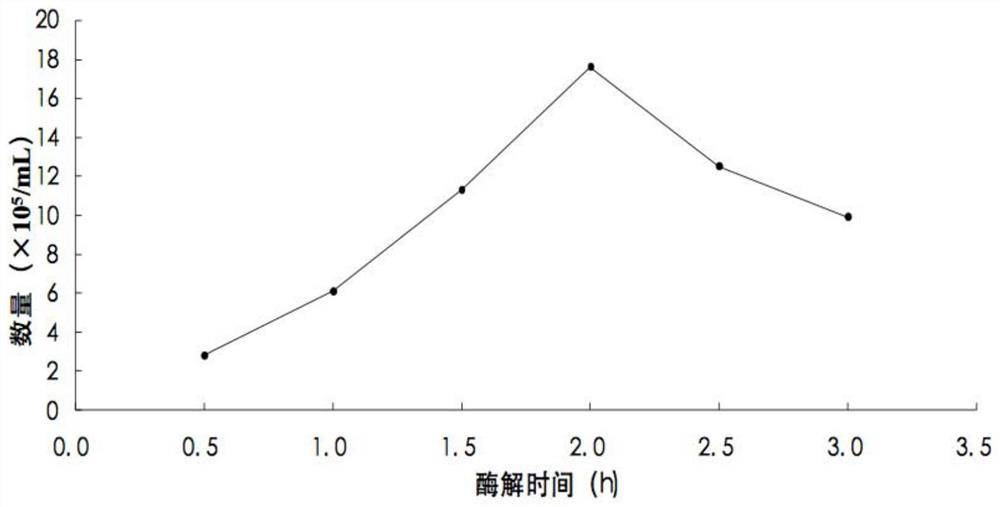Preparation method of protoplast of Tilletia glabrata
A technique for the production of smut and protoplasts, which is applied in the field of preparation of protoplasts of smut of wheat, and can solve the problems of less research on the pathogenic mechanism of pathogens and the like.
- Summary
- Abstract
- Description
- Claims
- Application Information
AI Technical Summary
Problems solved by technology
Method used
Image
Examples
Embodiment 1
[0052] Embodiment 1: Optimization of Tilletia glabra protoplast preparation method
[0053] Cultivate the teliospores of Tilletia tritici in 2% water agar medium at a temperature of 16°C and a relative humidity of 80%. Select the cells of different culture days and wash them down with sterilized distilled water, collect the bacterial liquid and filter it , centrifuge at 5000r / min for 10min to remove the supernatant, take 1g of mycelium, add 20ml of different types of compound enzyme solution, 28°C, 180r / min oscillating enzymolysis, observe the protoplast yield with a hemocytometer every half hour, and screen out The most suitable bacterial age, enzymatic hydrolysis time, enzymatic hydrolysis system, and osmotic pressure stabilizer for protoplast preparation.
[0054] 1. Bacteria culture time
[0055] Cultivate the teliospores of Tilletia tritici on the water agar medium, the temperature is 16 ℃, and the relative humidity is 80%. After 4 days, the first mycelium begins to germ...
Embodiment 2
[0073] Embodiment 2: Adopt optimized method to prepare Tilletia glabra protoplasts
[0074] 1.2 mol / L potassium chloride was used to prepare a composite enzyme solution with a mass concentration of 1.5% collapsing enzyme, 1.5% lysozyme and 1.5% helicase. Then prepare protoplasts according to the following steps:
[0075] (1) Mycelia culture: Cultivate the teliospores of Tilletia tritici on 2% water agar medium for 7 days, the culture condition is 16 ℃ of temperature, 80% relative humidity, then the teliospores of germination are rinsed with sterilized distilled water After coming down, collect the bacterial liquid.
[0076] (2) Enzymatic hydrolysis of the mycelial cell wall: filter the collected bacterial liquid, then centrifuge at 5000r / min for 10min to remove the supernatant, take 1g of mycelium, add 20mL compound enzyme solution, 28°C, 180r / min, oscillating for 2h, and Filtrate the enzymatic solution and centrifuge at 5000r / min for 10min to obtain protoplasts of Tilletia ...
Embodiment 3
[0079] Embodiment 3: the regeneration of Tilletia tritici protoplast
[0080] The protoplasts prepared in Examples 1 and 2 were resuspended with 1.2 mol / L potassium chloride, respectively, and spread on PDA and TB3 solid medium, cultured at 16° C. for 4 days, and observed single colonies grown.
[0081] The result is as Figure 6 Shown, the protoplast of Tilletia tritici grows more single bacterium colony on TB3 medium, and no single bacterium colony grows on PDA medium, therefore, TB3 medium is more suitable for protoplast regeneration than PDA medium, It can be used for regeneration culture of protoplast of Tilletia tritici.
PUM
 Login to View More
Login to View More Abstract
Description
Claims
Application Information
 Login to View More
Login to View More - R&D Engineer
- R&D Manager
- IP Professional
- Industry Leading Data Capabilities
- Powerful AI technology
- Patent DNA Extraction
Browse by: Latest US Patents, China's latest patents, Technical Efficacy Thesaurus, Application Domain, Technology Topic, Popular Technical Reports.
© 2024 PatSnap. All rights reserved.Legal|Privacy policy|Modern Slavery Act Transparency Statement|Sitemap|About US| Contact US: help@patsnap.com










